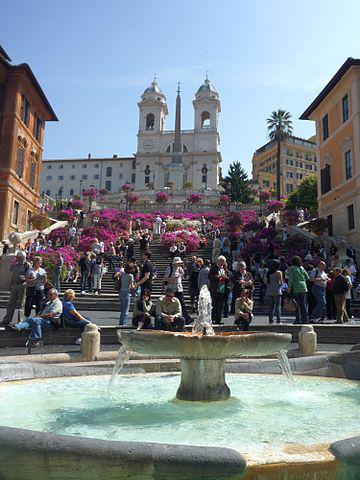
The
Piazze of Rome
The locations of all places are shown on my Google-Earth Map
Google-Maps (increase magnification this map is in 3-D)

Piazza di Spagna, the Spanish Steps, Trinita dei Monte, Fontana della Barcaccia and the crowds....
The Center of Rome.
Metro station "Spagna" on A-Line, bus 116, 117, 119
Piazza Navona, 1st cent ADccess to the murals may require special permission
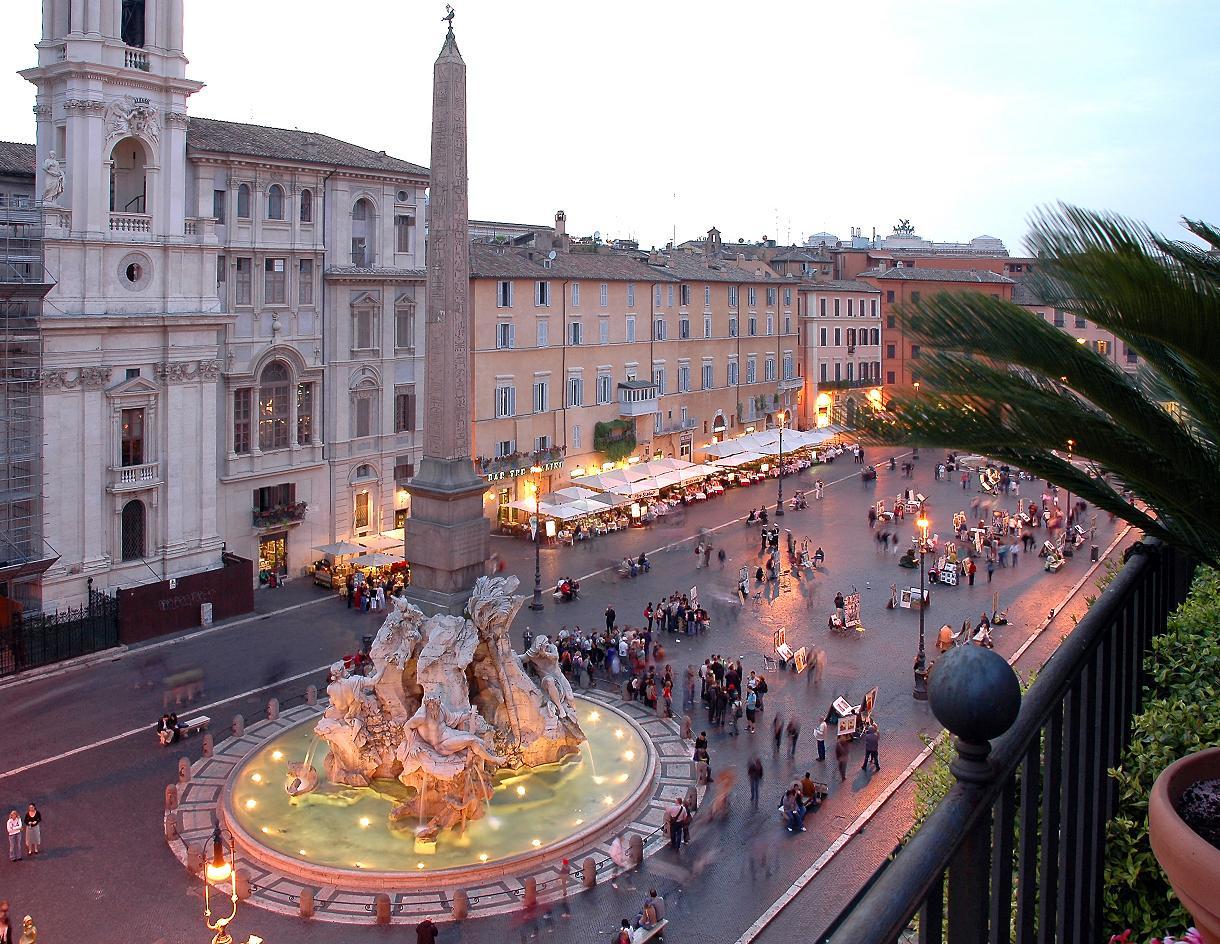
Piazza
Navona was built on the site of the Circus of Domitian in 1st century
AD and follows the form of the open space of the stadium The ancient
Romans came there to watch the agones
("games"), and hence it was known as 'Circus Agonalis'
(competition arena).
Rome's largest and busiest square it is at
its best early in the morning and liveliest at night, the
meeting place of the young
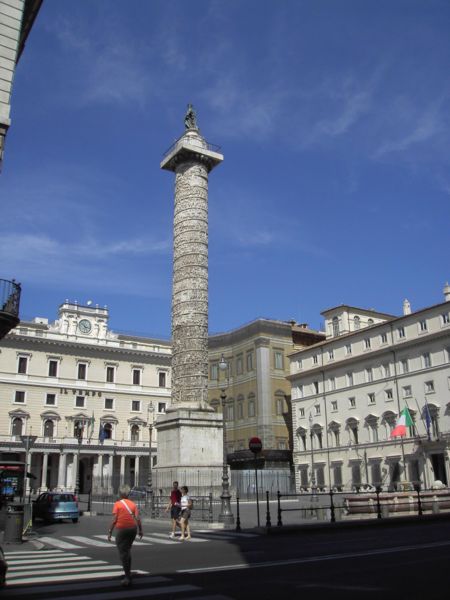
Piazza Colonna and the Column of Marcus Aurelius

Aurelius exploits
The Column of Marcus
Aurelius, "Columna Centenaria Divorum Marci et Faustinae"
– The Column for the divine anniversary of Marcus and Faustina
– his wife - features a spiral relief with his exploits. It was
modeled on the slightly taller Trajan's Column in 193 AD.
About 3
metres of the base have been below ground level since 1589 when, on
order of pope Sixtus V, the whole column was restored by Domenico
Fontana and adapted to the ground level of that time.
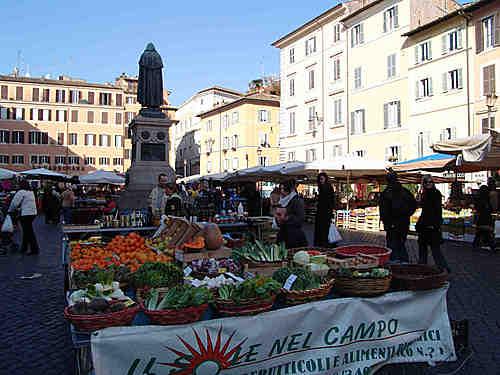
Campo de' Fiori has never been architecturally formalized. The square
has always remained a focus for commercial and street culture: the
surrounding streets are named for trades—Via dei Balestrari
(crossbow-makers), Via dei Baullari (coffer-makers), Via dei
Cappellari (hat-makers), Via dei Chiavari (key-makers) and Via dei
Giubbonari (tailors). With new access streets installed by Sixtus IV—
Via Florea and Via Pellegrino— the square became a necessary
corridor for important people passing between the Basilica of St.
John Lateran and the Vatican, thus bringing wealth to the area: a
flourishing horse market took place twice a week (Monday and
Saturday) and a lot of inns, hotels and shops came to be situated in
Campo de' Fiori. It is an ideal place to find cheap hotels.
In
1600 the lovely flower market became the scene where Giordano Bruno
was burnt on the stake on
February 17, 1600..

The statue of Giordano Bruno rising above the flower shops
Giordano Bruno was a Dominican friar, philosopher, mathematician, and astronomer. His cosmological theories went beyond the Copernican model in proposing that the Sun was essentially a star, and moreover, that the universe contained an infinite number of inhabited worlds populated by other intelligent beings.
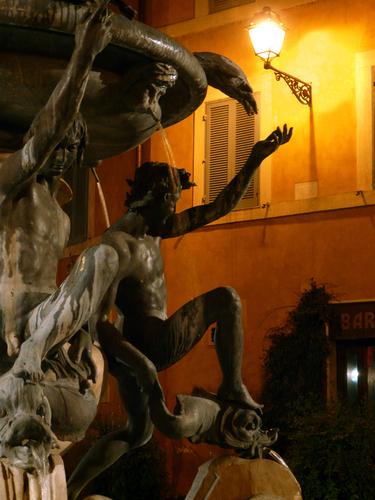
Sculpture on the Turtle Fountain, Fontana Tartarughe
During the 1400’s the Jews grouped themselves north of the Tiber in an area around the square, which is presently called Piazza Mattei. The Mattei family used the Jews to construct important buildings for trade and commerce in this area. In return they offered them whatever protection they needed. Between 1555 and 1844 the Turtle Fountain was the only source of water for the residents of the Jewish Ghetto nearby. Currently there still remain a few fragments of the Ghetto near Piazza Mattei.
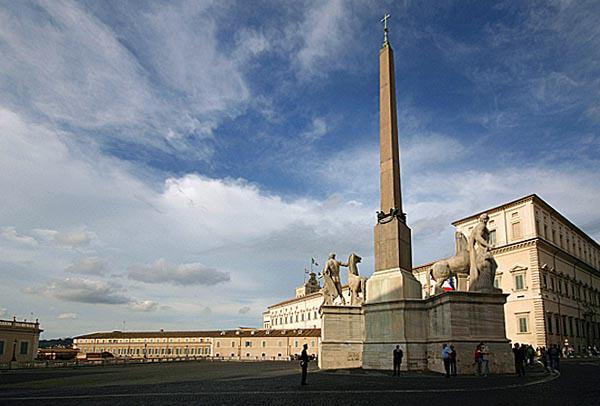
Piazza del Quirinale and its Obelisk surrounded by the Dioscuri, Castor and Pollux
The Quirinal Palace (known in Italian as the Palazzo del Quirinale or simply Quirinale) is the current official residence of the President of the Italian Republic.The palace was built in 1583 by Pope Gregory XIII as a papal summer residence.
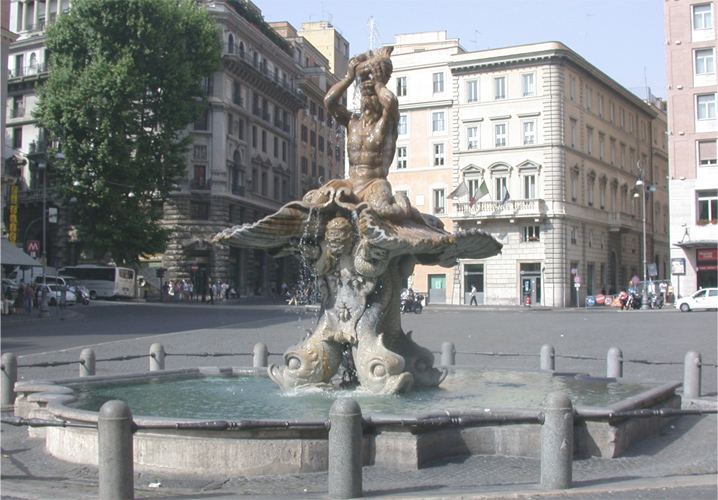
Piazza Barberini and its Fontana del Tritone, the beloved masterpiece of Gian Lorenzo Bernini 1642
Piazza Barberini is a large piazza in the centro storico, the city center of Rome, situated on the Quirinal Hill. It was created in the 16th century but many of the surrounding buildings have subsequently been rebuilt.
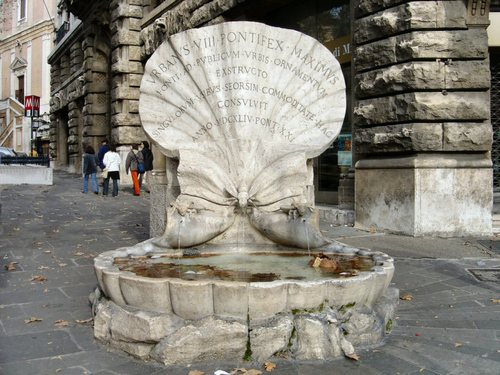
There exists another lovely Bernini fountain in this square (in fact,
behind the bus under the tree in the above photo):
Fontana delle
Api, the fountain of the bees, 1644
Metro Station"Barberini-Fontana Trevi" on A Line.
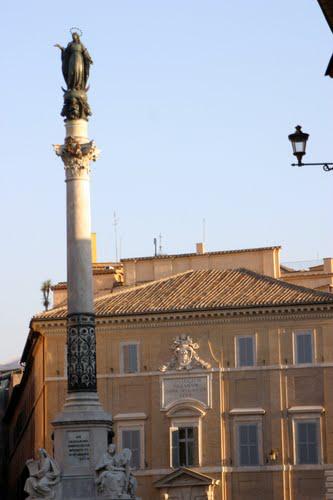
Piazza Mignanelli, Collumn of the Immaculate Conception....
The palazzo dominating Piazza Mignanelli was built in the beginning of the 17th century. It was commissioned by the wealthy Gabrielli family from the city of Gubbio. The third floor of the building was only added in 1887 by the architect Andrea Busiri Vici, who also resconstructed the facade.
Metro station "Spagna" on A-Line, bus 116, 117, 119
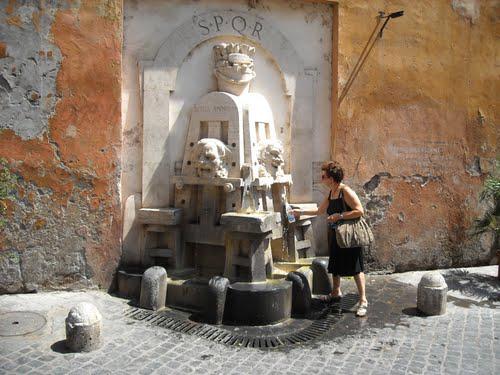
Many well known foreign artists, Caravaggio, Nicolas Poussin, Claude Lorrain, Jusepe Ribera, Diego Velazquez, and Peter-Paul Rubens lived in this Bohemian artist colony.
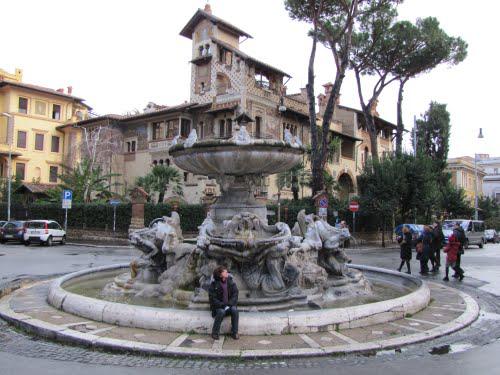
With
its unusual Liberty-style buildings with influence from the Art
Nouveau of the 1920s this small bunch of blocks is one of the most
interesting, and less known, landmarks of the city. - A must see.
Bus no. 92, 63, 630, 86
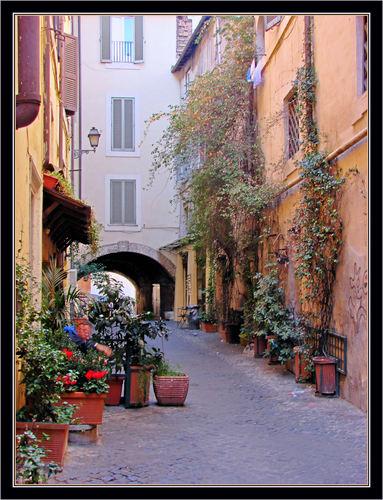
Eine meiner Lieblingsstrassen in 1952. Hier gab es eine Volksküche,
wo Gerhard und ich jeden Tag einmal Spaghetti essen konnten.
Here
used to be the Baths of Agrippa (Thermae Agrippae), 19 BC. They were
mined for spolia in the 7th cent AD, nothing seems to have survived.